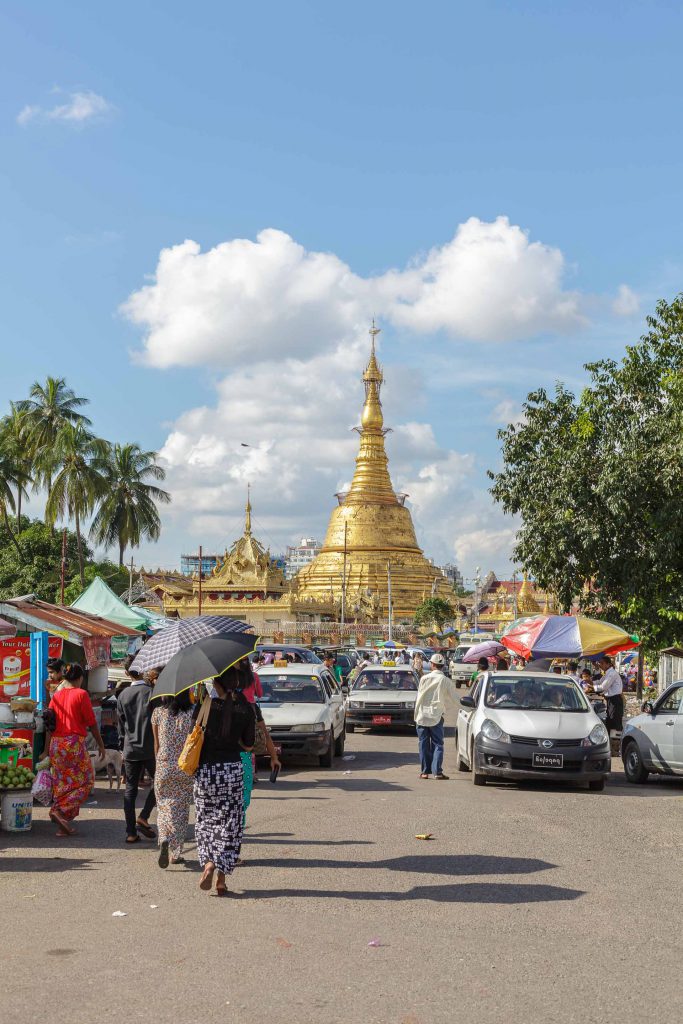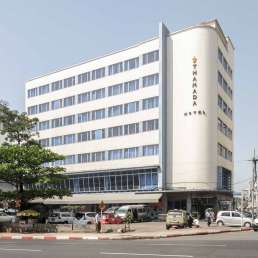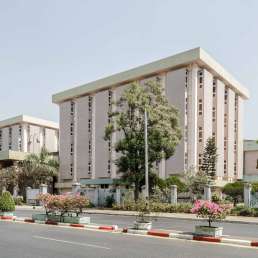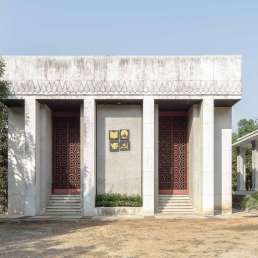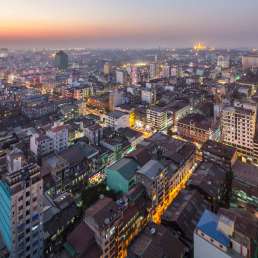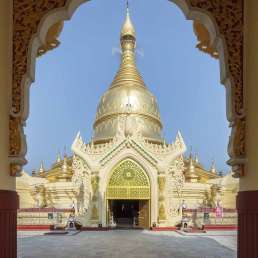Address: Strand Road
Year built: 5th century BC, rebuilt 1954
Architect: Unknown
By the ever-busy river docks of Botataung Pagoda Road lies this revered Buddhist temple, which lends the township its name. Legends regarding the pagoda’s origins abound, all involving various stories of how, and when, relics of the Buddha arrived here. One of them holds that two brothers, Tapussa and Bhallika, landed here after an arduous journey from India about 2,500 years ago. (Although various countries’ Buddhist legends have staked a claim to the brothers, archeological findings suggest that they originally hailed from what is today’s state of Odisha in India.) Their arrival was a triumphant one, for they carried with them several of the Buddha’s hairs. King Okkalapa, who ruled these shores, ordered the construction of the Shwedagon Pagoda to enshrine these hallowed relics. In the meantime they were to be kept here, at the site of the brothers’ landing. Once the Shwedagon was completed, King Okkalapa returned one of the hairs to the brothers in reward for their long and arduous voyage. They decided to erect a pagoda on this site. The 1,000 warriors who were drawn up as a guard of honour to welcome the hair relics from India are what gives the pagoda its name: in Burmese, “bo” means troop and “tataung” is a thousand.
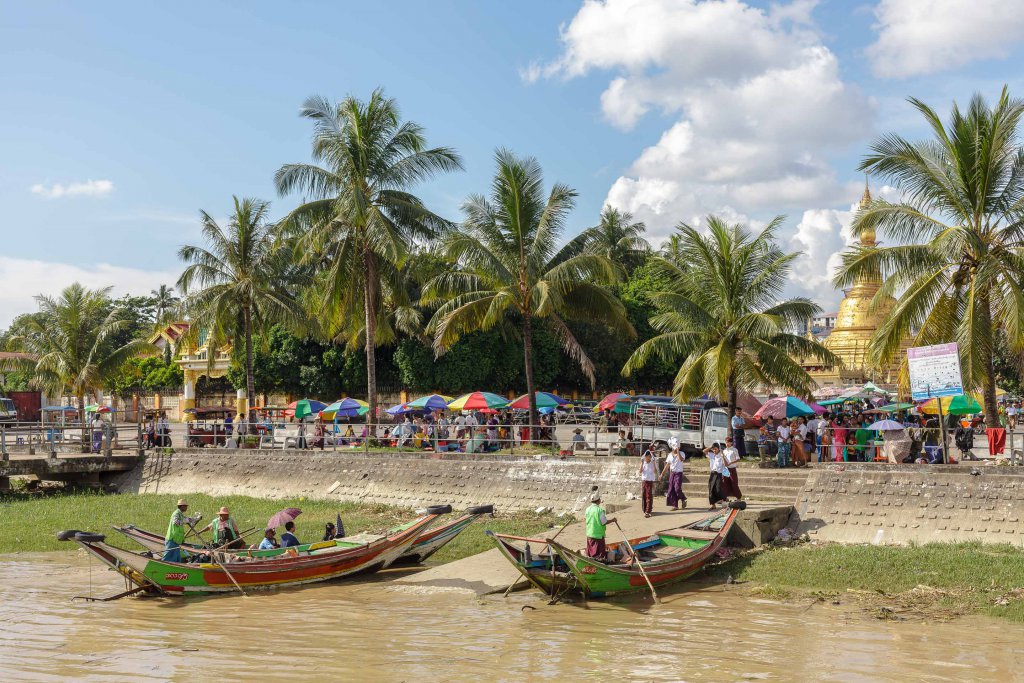
Botataung Pagoda, and its tale, became well-known only after it was almost completely destroyed in 1943, in a British bombing raid during the Second World War. During clearance works five years later, several precious artefacts were uncovered, and these seemed to corroborate the ancient legends. The story of these discoveries has a mythical aura of its own: a relic chamber was excavated at the heart of the pagoda. Inside, astonished workers found a treasure vault containing a stone casket in the shape of a pagoda, measuring 60 cm in diameter and 100 cm in height. Within the casket they found almost 700 ancient objects, ranging from precious stones to jewellery. Among these artefacts was a terracotta plaque. Once translated, it helped establish a connection between the Mon people (thought to have built the pagoda, who reside in Myanmar’s Mon State today) and the South Indian Brahmi script. After the ceremonial opening of a second, smaller stone casket found inside the first, a golden pagoda-shaped vessel emerged. Within it was a small golden cylinder. When they opened it, Buddhist dignitaries identified two small body relics—each the size of a mustard seed—and a sacred hair of the Buddha.
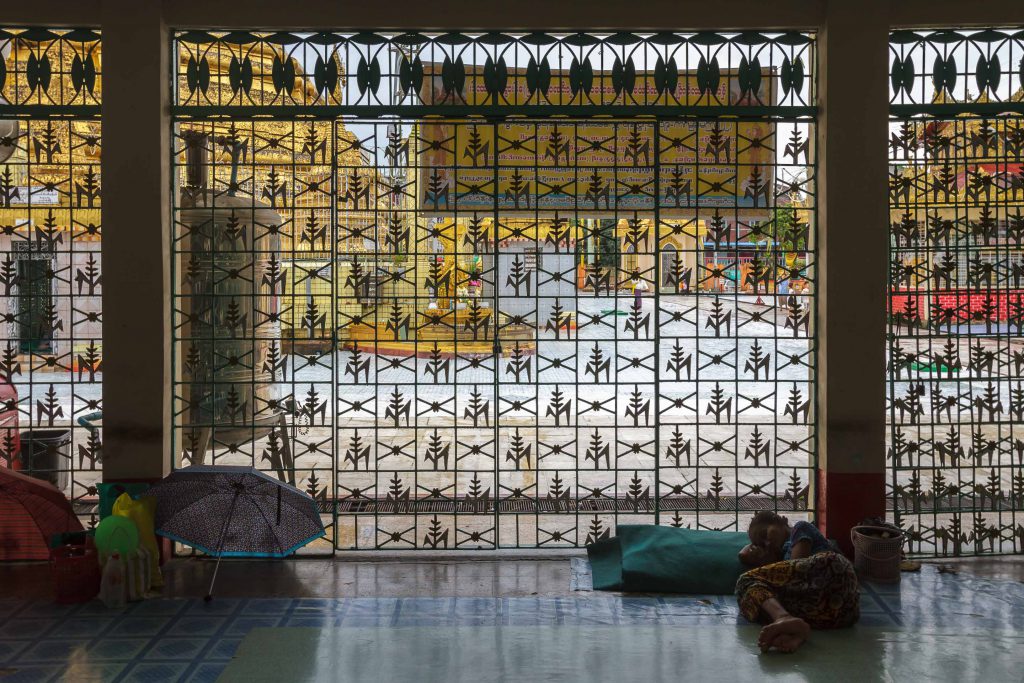
Rebuilding works ensued over following years; they were complete in 1954. As a result, today’s pagoda combines traditional temple architecture with post-war construction techniques. It mimics its original shape, at a height of 40 metres, covering a square of 29 × 29 metres. Unusual for a pagoda of its kind the main stupa is hollow, thanks to the extensive use of reinforced concrete. A circular walkway leads through a sequence of angular chambers. These surround the gold-covered central chamber, where the Buddha’s relics lie.
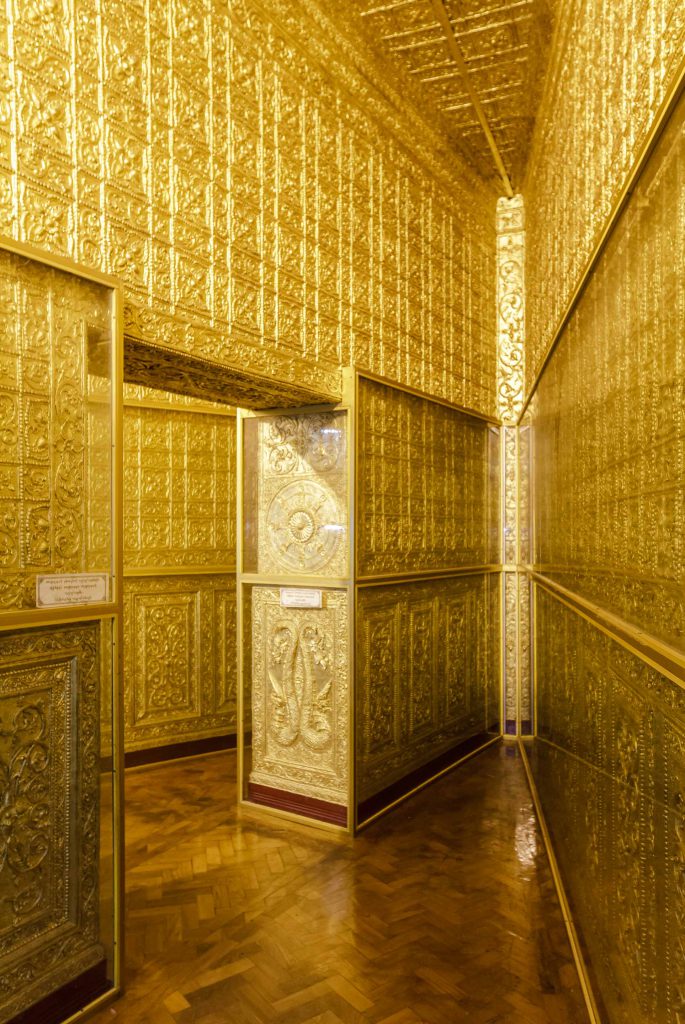
The pagoda brings a steady stream of visitors to the adjacent stretch, along the river. This is where passenger ferries dock. Traders’ boats can be seen unloading bag after bag of rice, while children play football here until the sun sets and bathes the place in shades of pink.
